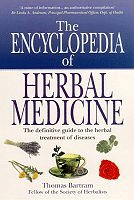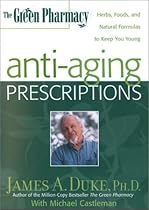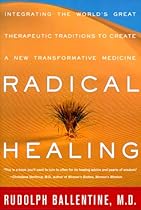| Healing with musical compositions based on the energy systems of ancient chinese medicine is one of the many varied approaches to healing with sound. It is a unique example of ancient healing principles merging with new vibrational concepts to provide yet another sound healing system. Perhaps future research will verify the particular healing benefits of each sonic healing technology, alone, or in combination with other vibrational healing modalities. |
| Following Mao's subsequent conclusion that acupuncture was a vital step toward the rebirth of a New China, this ancient healing art has been gradually able to find its way back into mainstream chinese medicine.
Although mentioned as a treatment for sciatica in some early Western medical textbooks, acupuncture was not of interest to America until 1972 when President Richard M. Nixon visited China. Accompanying Nixon to China was a journalist named Reston who brought back unique stories of surgery performed under strict acupuncture anesthesia. |
Kenny Ausubel
See book keywords and concepts |
 Licorice is highly prized in chinese medicine for its synergistic effects in formulas with multiple ingredients.60
POTASSIUM IODIDE
The most overlooked factor in the tonic is its nonherbal ingredient, potassium iodide, the base in which the herbs are contained. It is a compound of potassium and iodine also known by its chemical symbols as KI. Potassium iodide has a long history of usage in Eclectic and folk medicine, as well as in veterinary medicine. The Eclectics used potassium iodide extensively, but not for cancer. Licorice is highly prized in chinese medicine for its synergistic effects in formulas with multiple ingredients.60
POTASSIUM IODIDE
The most overlooked factor in the tonic is its nonherbal ingredient, potassium iodide, the base in which the herbs are contained. It is a compound of potassium and iodine also known by its chemical symbols as KI. Potassium iodide has a long history of usage in Eclectic and folk medicine, as well as in veterinary medicine. The Eclectics used potassium iodide extensively, but not for cancer. |
| Classical chinese medicine posits the existence of chi, a vital life energy somewhat analagous to the vis medicatrix naturae. The basis of acupuncture, for example, is to invigorate the person's chi by using small needles to stimulate a grid of meridians at highly specific points relating to bodily systems. Western medicine does not accept the existence of chi. |
Ruth Winter, M.S.
See book keywords and concepts |
 The root is used in chinese medicine as a tonic. In India, it is used as a hormonal tonic for the female reproductive system. It is prescribed for women to promote fertility, relieve menstrual pains, increase breast milk, and generally nourish and strengthen the female reproductive system. It is also used as a tonic for the lungs in consumptive diseases and for wasting in AIDS. Asparagus contains glycosides, asparagine, sucrose, starch, and mucilage. The root is used in chinese medicine as a tonic. In India, it is used as a hormonal tonic for the female reproductive system. It is prescribed for women to promote fertility, relieve menstrual pains, increase breast milk, and generally nourish and strengthen the female reproductive system. It is also used as a tonic for the lungs in consumptive diseases and for wasting in AIDS. Asparagus contains glycosides, asparagine, sucrose, starch, and mucilage. |
| Ephedra has been used for more than 5,000 years in chinese medicine and has become more and more popular in Western medicine. It acts like epinephrine (see) and is used as a bronchodilator, nasal decongestant, to raise blood pressure, and topically to constrict blood vessels.
EPICHLOROHYDRIN • A colorless liquid with an odor resembling chloroform. It is soluble in water but mixes readily with alcohol and ether. Used as a solvent for cosmetic resins and nitrocellulose (see) and in the manufacture of varnishes, lacquers, and cements for celluloid articles; also a modifier for food starch. |
Berkeley Holistic Health Center and Shepherd Bliss
See book keywords and concepts |
| Singha, in the middle of my tentative explorations of chinese medicine, I injured my lower back. I had pains in the lumbosacral area, and numbness and paresthesias in my left leg and foot. I was bent almost double.
I consulted the orthopedic surgeons at Bethesda Naval Hospital (I was in the Public Health Service), who prescribed bed rest, muscle relaxants, and a heating pad, and deferred their diagnosis.
I stayed in bed, bemused and nonfunctional from the muscle relaxants, and arose two weeks later little better. |
Thomas Bartram
See book keywords and concepts |
 Modern scientific research confirms a long traditional belief among the Australian aborigines of its effective use as a urinary antiseptic for chronic cystitis. chinese medicine confirms. Contains a volatile oil.
Preparations. Thrice daily.
Oil Sandalwood: 3-5 drops in honey.
Liquid Extract: 1-4ml in water. GSL
SANDFLY FEVER. See LEISHMANIASIS.
SANICLE. Snake root. Sanicula europaea L. German and Dutch: Sanikel. French: Sanicle. Italian: Sanicola. Dried flowering plant. Constituents: allantoin, saponins, essential oil, rosmarinic acid.
Action. Modern scientific research confirms a long traditional belief among the Australian aborigines of its effective use as a urinary antiseptic for chronic cystitis. chinese medicine confirms. Contains a volatile oil.
Preparations. Thrice daily.
Oil Sandalwood: 3-5 drops in honey.
Liquid Extract: 1-4ml in water. GSL
SANDFLY FEVER. See LEISHMANIASIS.
SANICLE. Snake root. Sanicula europaea L. German and Dutch: Sanikel. French: Sanicle. Italian: Sanicola. Dried flowering plant. Constituents: allantoin, saponins, essential oil, rosmarinic acid.
Action. |
John Boik
See book keywords and concepts |
 The majority of these herbs are used in chinese medicine to supplement the qi.
To achieve significant levels of HMWPs without using excessive amounts of any single herb, herbs can be combined. For example, the following combination
5 Mr. Moore welcomes inquires regarding Maria's experience with perillyl alcohol and the prospects of obtaining EIND approval for other cancer patients. He can be reached at (904) 893-6015.
6 Subhuti Dharmananda, Ph.D. is director of the Institute of Traditional Medicine in Portland, Oregon, and is the author of numerous books on Chinese herbal medicine. The majority of these herbs are used in chinese medicine to supplement the qi.
To achieve significant levels of HMWPs without using excessive amounts of any single herb, herbs can be combined. For example, the following combination
5 Mr. Moore welcomes inquires regarding Maria's experience with perillyl alcohol and the prospects of obtaining EIND approval for other cancer patients. He can be reached at (904) 893-6015.
6 Subhuti Dharmananda, Ph.D. is director of the Institute of Traditional Medicine in Portland, Oregon, and is the author of numerous books on Chinese herbal medicine. |
| The normal dose in chinese medicine is 9 to 15 grams/day of the whole fruit.
Proanthocyanidins
Similar to anthocyanins, proanthocyanidins inhibit collagenase activity in vitro and promote collagen cross-linking and synthesis in vitro. In addition, they scavenge free radicals and inhibit increased vascular permeability, two qualities that are also likely shared by anthocyanins. Due to their effect on collagen synthesis, similar cautions apply to both anthocyanidins and proanthocyanidins. |
Thomas Bartram
See book keywords and concepts |
 Well-known in chinese medicine. GSL
GERARD, JOHN. 1545-1611. Elizabethan physician. Born at Nantwich, Cheshire. Writer of the famous herbal: "Anatomie of Plants" (1597) in which is revealed considerable scientific insight into the medicinal character of plants. Herbalist to James I. Shakespeare must have visited his garden in Holborn, subsidised by the King. Also a surgeon, becoming a Master of Chirurgy. He was one of the first to discover the 'companionship of plants', referring to the affinities and antipathies in the plant kingdom.
First to grow potatoes in England. Well-known in chinese medicine. GSL
GERARD, JOHN. 1545-1611. Elizabethan physician. Born at Nantwich, Cheshire. Writer of the famous herbal: "Anatomie of Plants" (1597) in which is revealed considerable scientific insight into the medicinal character of plants. Herbalist to James I. Shakespeare must have visited his garden in Holborn, subsidised by the King. Also a surgeon, becoming a Master of Chirurgy. He was one of the first to discover the 'companionship of plants', referring to the affinities and antipathies in the plant kingdom.
First to grow potatoes in England. |
| Used for such chest conditions for over a millennia in chinese medicine.
Allergies: hay fever, irritative skin rashes. Low blood pressure. Hypothermia. Bed-wetting. Myasthenia gravis BHP (1983). Chinese Barefoot doctors inject the tea into nostrils for hay fever.
Usually given with expectorants: Liquorice, Lobelia, Senega, Sundew. "Combines well with Lobelia and Skunk Cabbage for bronchitis; and with Horsetail for frequency of urine." (Fletcher Hyde)
Contra-indications: hypertension, coronary thrombosis, thyrotoxicosis, glaucoma. Not given with anti-depressants (MAO inhibitors). |
| Modern chinese medicine has rejected entirely the conception of disease due to evil spirits and treated by exorcism. Great advances in scientific knowledge in China have been made since 1949, removing much of the superstitious aspect from herbal medicine and placing it on a sound scientific basis. Advances in the field of Chinese Herbal Medicine are highlighted in an authoritative work: Chinese Clinical Medicine, by CP. Li MD (Pub: Fogarty International Centre, Bethseda, USA). |
Ruth Winter, M.S.
See book keywords and concepts |
 It is used in chinese medicine to treat sore throats and soothe mucous membranes. BELLIS PERENNIS • Daisy Extract. The fresh or dried flowers of this plant, which is cultivated or grows wild all over North America, are used in an infusion or tincture. The flowers contain saponins, tannin, essential oil, flavones, bitter principle, and mucilage (see all). Daisy is used for coughs and inflammations of the mucous lining. It reputedly also helps arthritis, as well as liver and kidney problems. BENTONITE • A white clay found in the midwestern United States and in Canada. It is used in chinese medicine to treat sore throats and soothe mucous membranes. BELLIS PERENNIS • Daisy Extract. The fresh or dried flowers of this plant, which is cultivated or grows wild all over North America, are used in an infusion or tincture. The flowers contain saponins, tannin, essential oil, flavones, bitter principle, and mucilage (see all). Daisy is used for coughs and inflammations of the mucous lining. It reputedly also helps arthritis, as well as liver and kidney problems. BENTONITE • A white clay found in the midwestern United States and in Canada. |
Thomas Bartram
See book keywords and concepts |
 These increase ability of white blood cells to attack bacteria and invading cells. Chinese medicine: Ginseng (men), Chinese Angelica (women). Treatment. To strengthen body defences. Garlic, Borage, Comfrey. Agrimony, Balm, Chamomile (German), Echinacea. Horsetail, Liquorice, Lapacho, Sage, Wild Yam, Wild Indigo. Poke root, Thuja. Shiitake Mushroom. Reishi Mushroom, Chlorella..
Tea. Combine, equal parts, St John's Wort, Borage, Chamomile (German). 1 heaped teaspoon to each cup boiling water; infuse 15 minutes. 1 cup thrice daily. Powders. Combine, Echinacea 4; Comfrey root 2; Wild Yam 1. These increase ability of white blood cells to attack bacteria and invading cells. Chinese medicine: Ginseng (men), Chinese Angelica (women). Treatment. To strengthen body defences. Garlic, Borage, Comfrey. Agrimony, Balm, Chamomile (German), Echinacea. Horsetail, Liquorice, Lapacho, Sage, Wild Yam, Wild Indigo. Poke root, Thuja. Shiitake Mushroom. Reishi Mushroom, Chlorella..
Tea. Combine, equal parts, St John's Wort, Borage, Chamomile (German). 1 heaped teaspoon to each cup boiling water; infuse 15 minutes. 1 cup thrice daily. Powders. Combine, Echinacea 4; Comfrey root 2; Wild Yam 1. |
James A. Duke, Ph.D.
See book keywords and concepts |
 If you want to try Chinese ephedra to boost your energy and vitality, I urge you to consult an herbalist or a chinese medicine doctor. You don't want to take too much.
I have a couple of Chinese ephedra plants in my Garden of Youth. Unfortunately, they're not good role models for energy and vitality. For reasons that I can't fathom, they're not doing too well. Maybe I don't provide the proper stimulation.
Caffeine Provides a Satisfying Kick
One rung down the stimulant ladder, we have all of the herbs that contain caffeine: cocoa, coffee, guarana, guayusa, kola, mate, and tea. If you want to try Chinese ephedra to boost your energy and vitality, I urge you to consult an herbalist or a chinese medicine doctor. You don't want to take too much.
I have a couple of Chinese ephedra plants in my Garden of Youth. Unfortunately, they're not good role models for energy and vitality. For reasons that I can't fathom, they're not doing too well. Maybe I don't provide the proper stimulation.
Caffeine Provides a Satisfying Kick
One rung down the stimulant ladder, we have all of the herbs that contain caffeine: cocoa, coffee, guarana, guayusa, kola, mate, and tea. |
| If you'd prefer the capsules, ask an acupuncturist or chinese medicine doctor about them. ease, I've also been doing leg raises with light weights around my ankles, on the advice of my orthopedist.) I fully believe that low-impact, full-range-of-motion exercise is both preventive and curative for osteoarthritis.
So far, I don't have any trouble sitting down and standing up. But I do have some early-morning stiffness, which tells me that osteoarthritis is softly knocking at my door. |
| Also known as Chinese angelica, dong quai is a major "women's herb" in chinese medicine. Andrew Weil, M.D., a noted advocate of alternative therapies, says that he has seen women get good relief from menopausal discomforts when using a tincture that combines dong quai, chasteberry, and damiana. According
Dr. Duke s r—n< Anti-Aging
Elixir
Full o' Phytoestrogens Soup
If you eat lots of fatty meats—bacon, sausage, beef, lamb, pork—you can do yourself a double-barreled favor by replacing some of that animal fat with beans, which are top-notch sources of the isoflavones genistein and daidzein. |
| If you're interested in that, you need to consult chinese medicine practitioner. But the volatile oils in Chinese angelica—the compounds extracted when the herb is prepared as a tea or a tincture— have some pain-relieving properties as well as some anti-inflammatory and antispasmodic activity. c3 Wild Yam Ended 4 Years of Pain
%H mm. mm
£3 You may know wild yam as a treatment for menopausal discomforts. The herb contains an abundance of diosgenin, which is a weak phytoestrogen (plant estrogen). But it also has other compounds that help reduce inflammation. |
| But in its defense, I would like to point out that kudzu is used in chinese medicine to treat high blood pressure and heart disease.
In one study, Chinese researchers had 52 people with high blood pressure drink a strong tea made from kudzu root for 2 to 8 weeks. Seventeen of the study participants showed substantial improvement in their blood pressure readings, while another 30 experienced modest but noteworthy improvement. In a separate study, a similar kudzu preparation significantly reduced chest pain in people with angina. |
Thomas Bartram
See book keywords and concepts |
 Widely used in chinese medicine.
Preparations. Thrice daily.
Tea: 2 teaspoons to each cup boiling water; infuse
5 minutes. Half-1 cup.
Liquid extract: half-1 teaspoon in water.
Tincture BHP (1983) 1:5 in 45 per cent alcohol.
Dose 2-8ml. GSL
BURNET SAXIFRAGE. Lesser Burnet Pimpinella saxifraga L. Dried root and herb. Constituents: Coumarins, volatile oil, saponin. Action. Carminative, aromatic, stimulant, expectorant.
Uses. Flatulence, Stomach upsets. Preparation. Tea. 1 heaped teaspoon to each cup boiling water; infuse 5-15 minutes; 1 cup 2-3 times daily. GSL
BURNOUT. Widely used in chinese medicine.
Preparations. Thrice daily.
Tea: 2 teaspoons to each cup boiling water; infuse
5 minutes. Half-1 cup.
Liquid extract: half-1 teaspoon in water.
Tincture BHP (1983) 1:5 in 45 per cent alcohol.
Dose 2-8ml. GSL
BURNET SAXIFRAGE. Lesser Burnet Pimpinella saxifraga L. Dried root and herb. Constituents: Coumarins, volatile oil, saponin. Action. Carminative, aromatic, stimulant, expectorant.
Uses. Flatulence, Stomach upsets. Preparation. Tea. 1 heaped teaspoon to each cup boiling water; infuse 5-15 minutes; 1 cup 2-3 times daily. GSL
BURNOUT. |
Rudolph M. Ballentine, M.D.
See book keywords and concepts |
 It is emptiness delineated and staked out—within which something has manifested, or might in the future. It is emptiness delineated and staked out—within which something has manifested, or might in the future. |
J. E. Williams, O.M.D.
See book keywords and concepts |
 A small amount of ginseng is added, complemented by red dates (Zizyphi
12 g bupleurum root (chai hu)
9 g Scutellaria rhizome (huang qin)
9 g pinellia rhizome (ban xia)
6 g ginseng root (ren shen)
3 g licorice root (gan cao)
3-5 pieces jujube red date (da zao)
3-5 pieces fresh ginger root slices
Ingredients of Minor Bupleurum Decoction jujubae) and honey-fried licorice, to improve digestive function, enhance the constructive energies, supplement and fortify the spleen, and "nourish" the spirit (shen) residing in the heart. A small amount of ginseng is added, complemented by red dates (Zizyphi
12 g bupleurum root (chai hu)
9 g Scutellaria rhizome (huang qin)
9 g pinellia rhizome (ban xia)
6 g ginseng root (ren shen)
3 g licorice root (gan cao)
3-5 pieces jujube red date (da zao)
3-5 pieces fresh ginger root slices
Ingredients of Minor Bupleurum Decoction jujubae) and honey-fried licorice, to improve digestive function, enhance the constructive energies, supplement and fortify the spleen, and "nourish" the spirit (shen) residing in the heart. |












